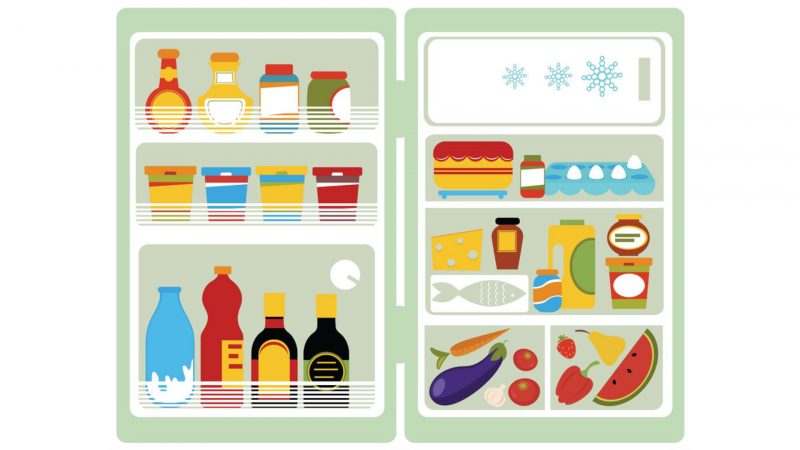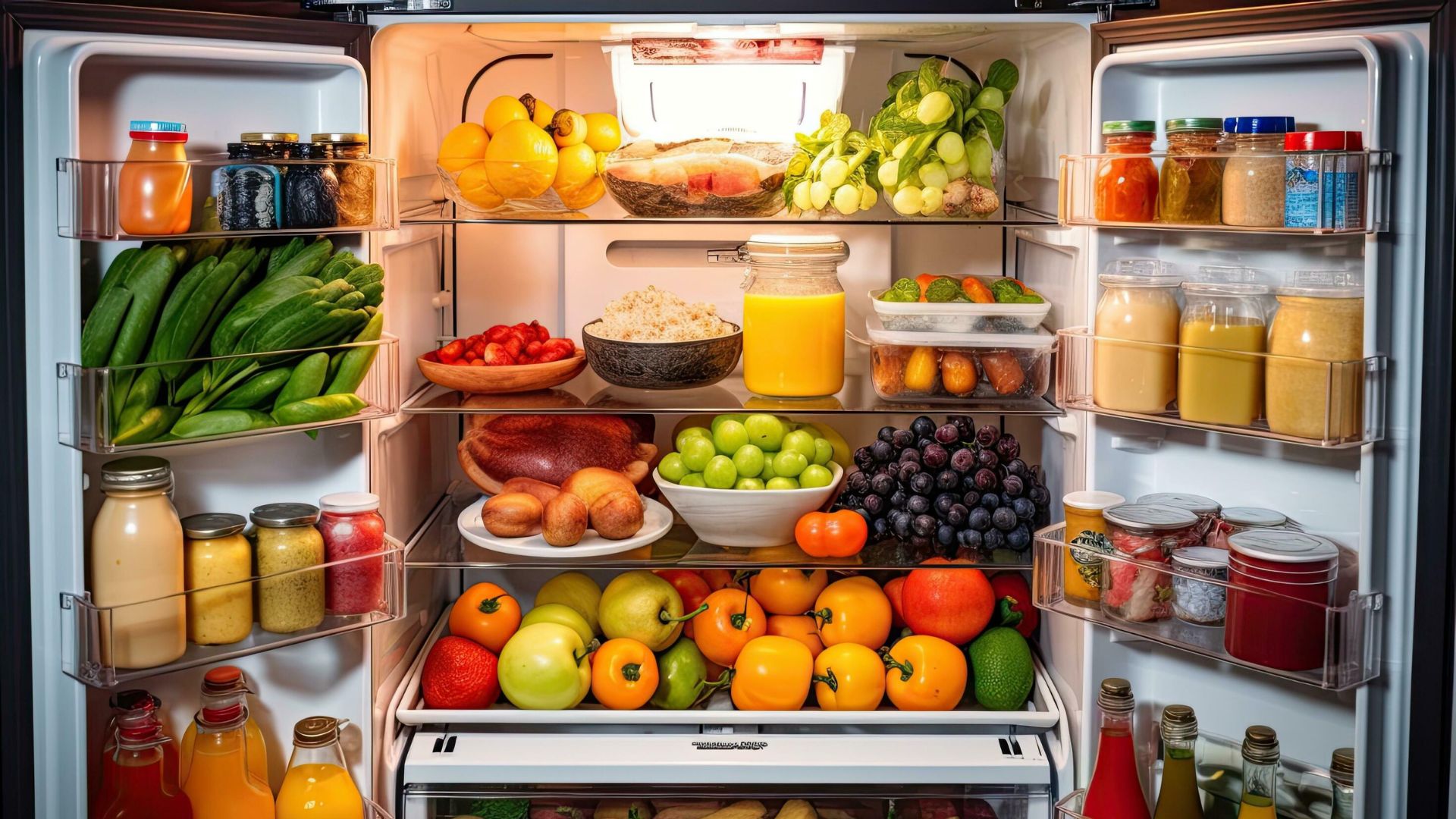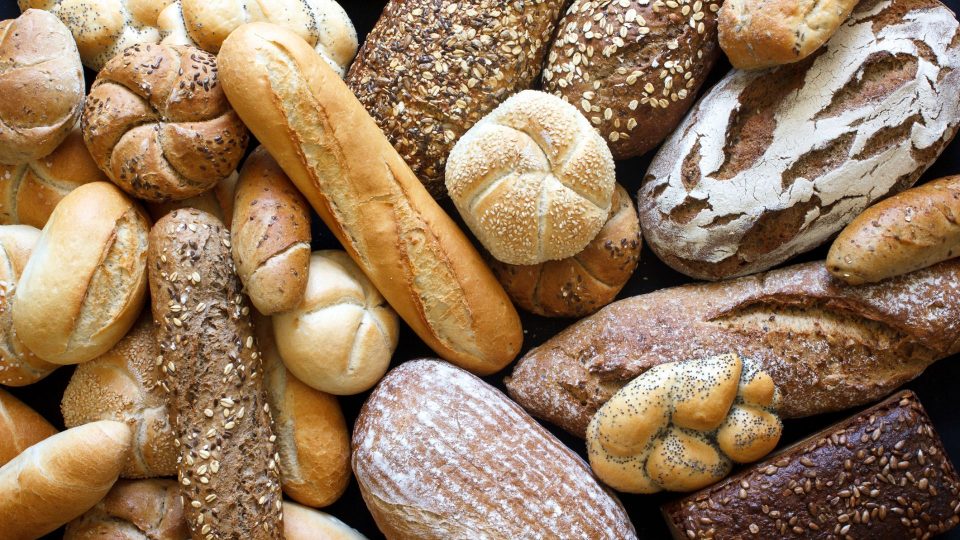In our modern kitchens, refrigeration has become an indispensable practice for preserving food and ensuring its quality. However, did you know that some foods actually suffer when subjected to the cold embrace of your refrigerator? Contrary to popular belief, refrigerating certain items can alter their flavor negatively, reduce their nutritional value, or hasten the spoiling process. Here, we’ll unveil a list of 35 foods that you should avoid refrigerating, along with the reasons behind these choices.

1) Bread: Keep It Fresh at Room Temperature
Refrigerating bread accelerates its drying process, resulting in an unappetizing, dry texture. Instead, store the portion you’ll consume within four days at room temperature and freeze the rest. A cool cupboard or a bread box will maintain its freshness.
2) Herbs: Preserve Freshness on Your Kitchen Counter
Fresh herbs like basil, cilantro, and parsley wilt faster in the fridge. To keep them crisp and flavorful, place them in a water-filled glass jar on your kitchen counter.
3) Potatoes: Best Stored in Paper Bags
Refrigerating potatoes negatively affects their flavor. Opt for paper bags for storage to prevent moisture buildup and faster decay.
4) Fruits: Maintain Flavor and Texture
Certain fruits, including avocados, apples, bananas, citrus fruits, berries, peaches, apricots, and nectarines, should be kept out of the fridge to retain their flavors and textures. However, you can refrigerate them for 30 minutes before consumption if you prefer a crisp bite. Oranges, lemons, and limes can be stored at room temperature on your kitchen counter. Avoid overcrowding them to prevent mold. Unripe avocados should stay out of the fridge, but ripe or cut avocados can be refrigerated.
5) Onions: Keep Them Dry and Away from Potatoes
Store onions in a paper bag in a cool, dark place, away from potatoes. Potatoes release moisture and gases that can cause onions to rot and develop an oniony scent. Refrigeration softens onions and promotes mold growth.
6) Salad Dressings: Most Don’t Need Refrigeration
Vinegar or oil-based salad dressings are fine stored outside the fridge. However, cream, yogurt, or mayo-based dressings should be refrigerated.
7) Tomatoes: Avoid Loss of Flavor and Texture
Tomatoes lose flavor and become mushy in the fridge. To ripen them faster, store them in a paper bag outside the fridge. Once ripe, they’ll remain fresh for about three days.
8) Ketchup and Soy Sauce: No Refrigeration Required
Thanks to vinegar and preservatives, ketchup and soy sauce remain safe without refrigeration, even after opening.
9) Cereal: Keep It Happy Outside the Fridge
Your morning cereals stay fresh and happy outside the fridge, so leave them be.
10) Oils: Most Are Safe at Room Temperature
Store most oils at room temperature in a dark cabinet or the fridge door. The exceptions are nut-based oils, which should be refrigerated.
11) Coffee: Preserve Flavor in an Airtight Container
Coffee is best stored in an airtight container at room temperature. Refrigeration condenses coffee and reduces its flavor.
12) Pickles: High Preservatives Keep Them Fresh
Pickles, rich in preservatives, remain fresh outside the fridge. Store them in an open space to allow air circulation.
13) Melons: Maintain Flavor at Room Temperature
Melons, when refrigerated, tend to break down into a powdery, grainy texture. Keep them at room temperature to preserve their flavor. After cutting, refrigerate melons for three to four days.
14) Peanut Butter: No Refrigeration Required
Peanut butter stays fresh in a cool, dark spot without the need for refrigeration.
15) Honey: Keep It Luscious at Room Temperature
Refrigeration causes honey to harden. Store it at room temperature, away from direct sunlight.
16) Berries: Consume Quickly Outside the Fridge
Fresh berries have a short shelf life, so enjoy them outside the fridge within a day or two of purchase.
17) Jam: Preservatives Make Refrigeration Unnecessary
High preservative content in jams and jellies allows them to be stored without refrigeration, even after opening.
18) Stone Fruits: Ripe and Ready Outside the Fridge
Stone fruits like peaches, cherries, and plums fare better outside the fridge. Keep them in your kitchen until they ripen and are ready to eat.
19) Garlic: Flavor Preservation in a Paper Bag
Refrigeration diminishes the flavor of garlic and promotes mold growth. Store garlic in a paper bag in a cool, dark spot.
20) Spices: No Refrigeration Needed for Ground Spices
Ground spices require no refrigeration whatsoever.
21) Nuts and Dried Fruits: Store in a Cool, Dark Spot
Nuts and dried fruits stay fresh when stored in a cool, dark spot, without the need for refrigeration.
22) Winter Squashes: Rich in Vitamins, Best at Room Temperature
Varieties of winter squash like butternut, acorn, spaghetti, delicata, and pumpkins thrive at room temperature and can last for about a month or longer outside the fridge.
23) Packed Tuna: Sealed for Room Temperature
Sealed tuna, as found in cans, is perfectly fine stored at room temperature.
24) Peppers: Thrive Without Refrigeration
Whether red, green, yellow, or chili peppers, they maintain their quality without refrigeration. Store them in a paper bag in a cool, airy space.
25) Basil and Other Leafy Herbs:
Leafy herbs like basil, cilantro, and parsley should be stored upright in a glass of water on your kitchen counter. Refrigeration can cause them to wilt quickly.
26) Balsamic Vinegar:
Balsamic vinegar can be stored at room temperature in a cool, dark place. Cold temperatures can thicken the vinegar, affecting its texture and flavor.
27) Hot Sauce:
Most hot sauces, thanks to their high acidity and preservatives, can be kept in your pantry or on the dining table without refrigeration.
28) Dry Pasta:
Dry pasta, whether it’s spaghetti, penne, or any other variety, doesn’t require refrigeration. Keep it in a sealed container or the original packaging in your pantry.
29) Chocolate:
Chocolate is best stored in a cool, dry place, away from direct sunlight. Refrigeration can cause it to develop a white “bloom” on the surface, which is harmless but affects its appearance.
30) Dry Rice:
Like pasta, dry rice varieties such as jasmine, basmati, and long-grain rice don’t require refrigeration. Store them in a sealed container in your pantry.
31) Soy Products (Tofu and Soy Milk):
Unopened tofu and soy milk can be stored at room temperature until their expiration date. Once opened, they should be refrigerated and consumed within a few days.
32) Canned Vegetables and Fruits:
Canned vegetables and fruits are safe to store in your pantry until the can is opened. After opening, transfer any leftovers to a sealed container and refrigerate.
33) Crackers:
Most crackers can be stored outside the refrigerator. Keep them in an airtight container to maintain their crispness.
By following these guidelines and keeping these 35 foods out of your refrigerator, you can ensure that your food remains fresher, more flavorful, and nutritionally intact. Make the most of your groceries by understanding the best storage practices for each item.
Keep Reading:
» 10 Strongest Beers in the World to Kick Dopamine Levels
» सबसे अच्छा बिस्कुट कौन सा है – Sabse Accha Biscuit Kaun Sa Hai
» Top 14 Beer Brands In India With High Alcohol Percentage
» Stay Cool and Refreshed with these Summer Drink Recipes




